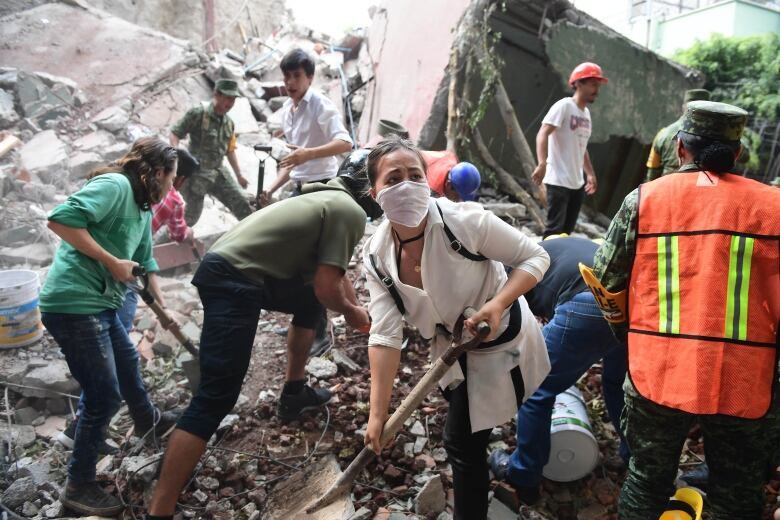'Their school came down upon them': Deadly Mexico City earthquake kills more than 200
Early Tuesday afternoon, a 7.1-magnitude earthquake struck Mexico City, rattling the capital on the 32nd anniversary of a quake that killed thousands in Mexico in 1985.
North America's largest city saw buildings toppled and more than 200 people killed by the second major earthquake in the country in less than two weeks.
Rescue efforts continued overnight, as dozens of schoolchildren are feared buried beneath the rubble, and many are still missing.
There were still a large number of students in their classes sitting in their little desks when their school came down upon them.- Franc Contreras
Journalist Franc Contreras was in a very central part of Mexico City when the quake hit.
"The floors are made of stone here, so it's a very solid structure, built recently," he tells The Current's Anna Maria Tremonti.
"I'll tell you it felt like one of those carnival houses where the walls and the floors moved side by side and you can't stand up — that's what it felt like. Things were falling off the walls. The bookshelf came down."

Early Tuesday morning, Contreras says an earthquake alarm was expected — a yearly drill due to the 32nd anniversary of the 1985 Mexico earthquake was scheduled — "that was the big irony here."
"At 11 a.m. sharp, we had that drill system and so all of us faithfully went out to the streets," he explains. But when he went back home and the quake hit, Contreras says he heard no warning alarm.
"I was caught by surprise like everybody else ... It was frightening. I grabbed my dog and we just ran for the door and went out to the staircase, and I thought the staircase was just going to crumble under my feet."
Hours after the quake hit, massive avenues and boulevards were completely blocked off. Contreras says people were rushing through the streets to get home to make sure loved ones were okay, creating traffic chaos.
Rescue workers worked through the afternoon crawling into the tunnels they could make, into the areas inside the school trying to pull out bodies.- Franc Contreras
A lot of the first responders were actually neighbours, Contreras says, and there was no way to avoid the devastation created by the massive earthquake.

"You can imagine, this is a gigantic city [with] 21 million people here. As far as the eye can see, in any direction, it's almost wall to wall concrete ... buildings were absolutely destroyed."
One of the most heartbreaking stories to come out in the first few hours after the earthquake, Contreras says, was hearing reports that a large number of students in the southern part of Mexico City did not get out their school in time.
"When the earthquake hit at 1:14 p.m. local time, Mexico City time, there were still a large number of students in their classes sitting in their little desks when their school came down upon them," he tells Tremonti.

"And so rescue workers worked through the afternoon crawling into the tunnels they could make, into the areas inside the school trying to pull out bodies."
He says many students were rescued and taken to hospitals, and some survivors were still separated from parents waiting to hear from their families early Wednesday morning.
"My sense is there perhaps will be discoveries of other schools and perhaps even things like hospitals where victims were trapped."
Follow updates on this story at cbc.ca/news
Listen to the full segment near the top of this web post.
This segment was produced by The Current's Samira Mohyeddin, Karin Marley and Willow Smith.